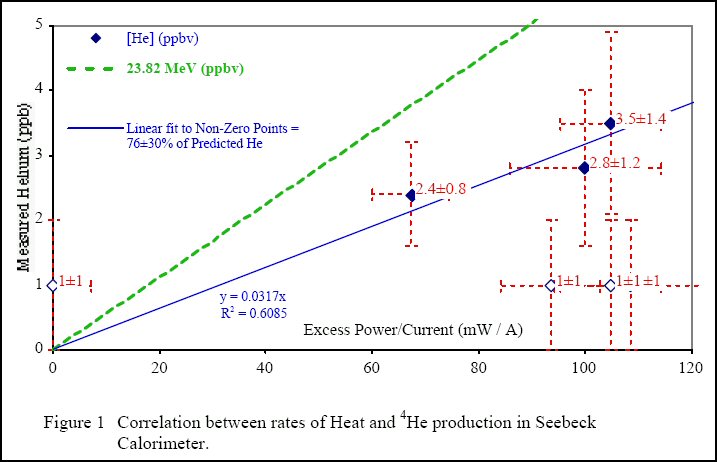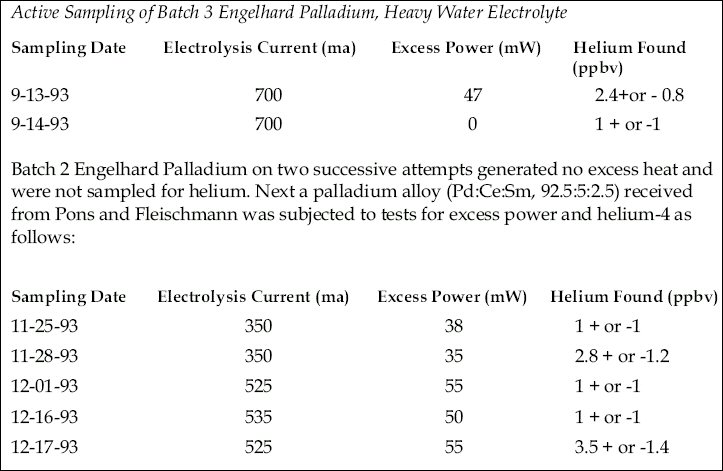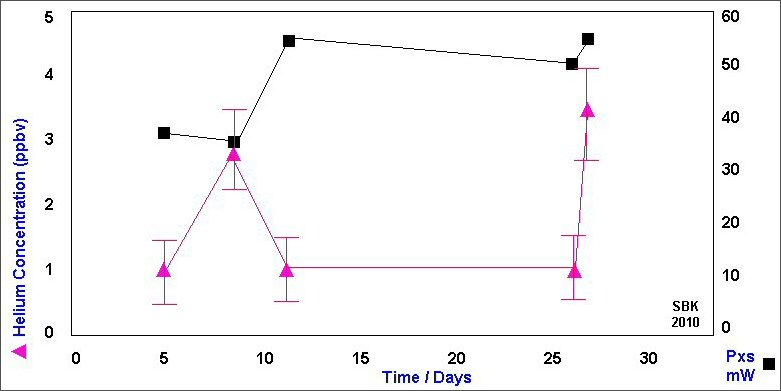|
⇐ Previous Article — Table of Contents — Next Article ⇒
New Energy Times home page
19. Analysis of SRI HH Experiment Series
By Steven B. Krivit
In Issue 34 of New Energy Times, we explored in great depth the SRI International experiment "M4," performed in 1994 and first reported to the Electric Power Research Institute in 1998 [1]. We reported on inexplicable changes in representations of that data between the 1998 report and a paper published two years later by electrochemist Michael McKubre (SRI International), Peter Hagelstein (MIT) and two other authors [2].
Another series of experiments, also reported in both publications, is worthy of review. In 1993, researchers at SRI International performed an independent replication of a LENR experiment performed by Melvin Miles and colleagues in which they reported temporally correlated excess heat and helium in a glass cell.
In 2000, McKubre reported his group's successful findings of excess heat and helium, a powerful confirmation of low-energy nuclear reactions. They also claimed that the observed helium was 76 +/- 30% of the predicted helium, assuming the D+D "cold fusion" hypothesis of D+D -> 4He (~24 MeV) heat, given the assumption that there were no other nuclear products in the cell.
The data shown below, published in 2000, comes from two sets of experiments, one from September 1993, the other from November and December 1993. Helium concentration is shown on the y-axis, and excess power/current (mW/A) is shown on the x-axis.

SRI HH series experiment, as reported in 2000, claiming a temporal and near-quantitative correlation between excess heat and 4He.
The image below, taken directly from the 1998 report, shows the original data. There are two helium samples in the first set and five samples in the second set. A description of the experiment begins on pdf pg. 154 of the report, and the data is on pdf pg. 165 of the report.

In these types of experiments, it is customary to show the evolution of excess heat and helium over time. It is also customary to show the excess heat in milliwatts. Because all of this information is available in the 1998 report, we can graph both sets of values over time.
Below is a graph for the second set of experiments. It shows a remarkably different picture from the picture represented by McKubre, Hagelstein, and co-authors. Another key difference, in addition to representing the data over time, is that the plot between the points does not throw away the values for the first, third and fourth samples. The 2000 authors had thrown away those data points based on an untested hypothesis of helium absorption (not permeation) and retention in palladium.

Note the many uncorrelated fluctuations between excess heat and helium evolution, when they are viewed in a straightforward manner.
References
1. Development of Energy Production Systems from Heat Produced in Deuterated Metals – Energy Production Processes in Deuterated Metals, Vol. 1, TR-107843-V1, T. Passell (project manager), M. McKubre, S. Crouch-Baker, A. Huaser, N. Jevtic, S.I. Smedley, F. Tanzella, M. Williams, and S. Wing (principal investigators), B. Bush, F. McMohon, M. Srinivasan, A. Wark, and D. Warren (non-SRI contributors), June 1998
2. McKubre, M., Tanzella, F., Tripodi, P., and Hagelstein, P., "The Emergence of a Coherent Explanation for Anomalies Observed in D/Pd and H/Pd Systems; Evidence for 4He and 3He Production," 8th International Conference on Cold Fusion, 2000, Lerici (La Spezia), Italian Physical Society, Bologna, Italy.
⇐ Previous Article — Table of Contents — Next Article ⇒
|

